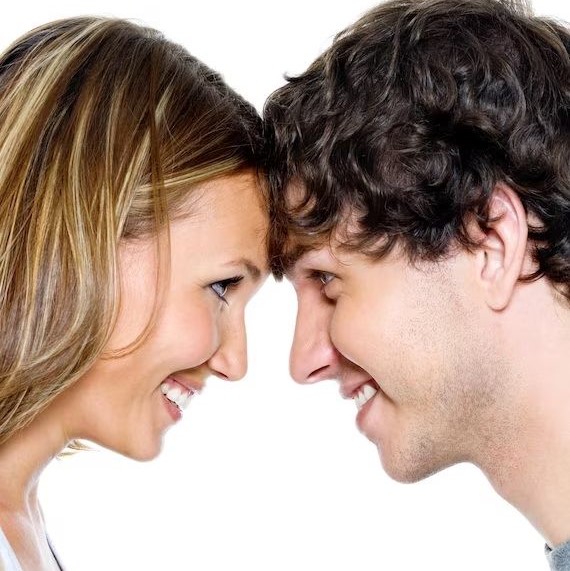How to Read and Respond to Facial Cues
How to Read and Respond to Facial Cues
Facial cues are an important aspect of human communication. They often provide unconscious signals about our emotions and intentions. Learning to read these cues can help us better understand other people and avoid misunderstandings. Common facial expressions include happiness, anger, fear, disgust, and surprise. Additionally, eye contact, eyebrow movement, and mouth movements can also convey a variety of meanings. It is important to take the context of the situation into account when interpreting facial cues. For example, a person may appear angry because they are frustrated with a task, but may also be showing anger in response to a perceived threat. By understanding the context of the situation, you can better understand the meaning behind facial cues.
Responding to facial cues is also an important aspect of communication. When we react appropriately to someone's cues, we can show empathy and understanding. Conversely, failing to react appropriately can lead to misunderstandings and a breakdown in communication. Different social situations require different responses. For example, if someone appears sad, offering comfort and support can be an appropriate response. However, in situations where someone appears angry, responding with aggression or defensiveness is unlikely to be productive. It is important to remain calm and listen actively in order to fully understand the meaning behind someone's facial cues and respond appropriately.
Learning to read and respond to facial cues takes practice and patience. One way to improve your skills is by observing others and paying attention to their facial expressions in different situations. You can also practice with a partner, taking turns making different facial expressions and asking the other person to interpret them. Remember that not everyone expresses emotions in the same way, and cultural differences can also affect the meaning behind facial cues. By remaining open-minded and willing to learn, you can improve your ability to read and respond to facial cues and become a more effective communicator.
Recognizing Common Facial Expressions
Facial expressions are an integral part of our daily interactions. Recognizing common facial expressions is essential to understanding the emotions and intentions of others. The six fundamental facial expressions are happiness, sadness, surprise, anger, disgust, and fear. Each of these expressions represents a distinct and recognizable configuration of facial muscles. By being aware of these expressions, we can improve our communication skills and develop a greater sense of empathy.
Recognizing common facial expressions can also enhance our ability to decipher nonverbal cues. Since only a small part of our communication is based on the words we use, understanding these cues can be incredibly helpful. Our facial expressions often reveal much more about our thoughts and feelings than our words. By learning to interpret these cues, we can develop a greater sense of understanding and connection with those around us.
While recognizing common facial expressions can be challenging, with practice it is possible to improve our accuracy. It is important to remember that everyone's facial expressions are unique. The same expression may differ slightly from person to person. This can be due to differences in facial structure, muscle tone, and cultural background. However, by focusing on the overall configuration of facial muscles rather than individual features, it is possible to recognize common facial expressions with greater ease and accuracy.
Analyzing Facial Expressions in Detail
Facial expressions are an integral part of nonverbal communication as they serve to convey emotions and feelings. These expressions can be considered the window to the soul as they give insight into the inner workings of a person’s mind. The study of facial expressions has been a topic of interest for psychologists and researchers alike as it helps to better understand human behavior.
Facial expressions can be broken down into categories like happiness, sadness, anger, fear, surprise, and disgust. Each of these expressions involves a combination of muscle movements in the face that produce specific patterns. These patterns can vary based on ethnicity, age, and gender, but the underlying emotions they represent remain universal. Understanding these patterns and their connections to specific feelings enables us to interpret the emotions of those around us more accurately.
The analysis of facial expressions is used in various areas such as psychology, marketing, and law enforcement. In psychology, it is used to understand mental disorders like depression, anxiety, and bipolar disorder. In marketing, it is used to study consumer behavior and preferences. Law enforcement uses facial recognition technology to identify suspects in criminal investigations. Analyzing facial expressions can provide valuable information and insight into various aspects of human behavior, and it will likely continue to be an essential tool in the future.
How to Read a Person’s Overall Disposition
Ignoring a person's nonverbal cues can result in misunderstanding and misinterpretation of their overall disposition. A person's body language often speaks louder than their words and can provide insight into their emotions and intentions. Observation of a person's facial expressions, eye movements, and posture can give clues about how they are feeling and what they are trying to communicate.
Facial expressions are especially revealing as they can indicate a wide range of emotions, including happiness, sadness, anger, and surprise. The eyes are also important in conveying emotion, with direct eye contact suggesting confidence and trustworthiness while avoiding eye contact can signal discomfort or dishonesty. Meanwhile, the way a person holds themselves can indicate their emotional state, with slumped shoulders suggesting sadness or defeat and an upright, open stance conveying confidence or assertiveness.
Understanding nonverbal cues can be particularly important in professional settings, where it can impact interactions with clients or colleagues. Learning how to read body language and other nonverbal signals takes practice and attention to detail, but with time it can become an intuitive and valuable skill. By paying attention to a person's nonverbal cues, one can gain a better understanding of their underlying emotions and intentions, leading to more productive and effective communication.
The Need to Understand Microexpressions
Microexpressions are facial expressions that occur rapidly and unconsciously in response to a stimulus. They are very brief, lasting only a fraction of a second, and reveal the true emotions of the person displaying them. These expressions are especially important in situations where emotions can be used as an indicator of intent or motivation, such as criminal investigations or job interviews. Understanding microexpressions can help individuals to assess the emotions and attitudes of others, and respond accordingly.
Research has shown that people have a natural ability to recognize microexpressions, even if they are not consciously aware of them. However, this ability can be improved through training and practice. There are numerous resources available for individuals who want to learn more about microexpressions, including books, online courses, and training programs. By developing this skill, individuals can enhance their communication and negotiation skills, and better understand the emotions and motivations of those around them.
Despite the importance of microexpressions, they can be difficult to detect and interpret accurately. Factors such as cultural differences, individual variation, and personal biases can all influence the perception and interpretation of microexpressions. Therefore, it is important to approach the analysis of microexpressions with caution and to recognize the limitations of this technique. Nevertheless, with the appropriate training and awareness, the study of microexpressions can provide valuable insights into human behavior and emotion.
Identifying Body Language
Body language is a fascinating aspect of human communication that can reveal a lot about a person's thoughts, emotions, and intentions. Observing and interpreting body language can give us valuable insights into how someone is feeling or what they might be trying to convey. From a slight eye movement to a firm hand gesture, every aspect of our body language can indicate something different. Therefore it is important to understand how to identify various non-verbal cues and gestures to accurately read people's intentions.
The key to identifying body language is to focus on clusters of non-verbal cues rather than just a single gesture or expression. By analyzing multiple body language signals, we can piece together a more accurate picture of the sender's emotional state or attitude. For example, if someone is sitting with their arms crossed, it may indicate a defensive or closed-off posture, but it could also mean they just feel cold. However, if they are also avoiding eye contact and fidgeting, it may suggest that they are uncomfortable or anxious.
It's also important to understand that interpreting body language isn't an exact science. Gestures and expressions can vary greatly depending on cultural, social, and individual factors. What may be considered a sign of respect in one culture could be seen as disrespectful in another. Additionally, people may use body language to deliberately deceive or mislead others. Therefore, we should be cautious when interpreting body language and use it as a supplementary tool rather than a definitive source of information.
Using Facial Cues to Improve Conversations
Facial cues play an integral role in human communication. From a simple smile that conveys happiness to a raised eyebrow that shows skepticism, facial expressions can convey a wide range of emotions and intentions. By being attuned to these cues in conversations, we can improve our ability to communicate effectively with others. For example, we may notice if someone is showing signs of discomfort or confusion and adjust our language or tone accordingly.
Facial cues also provide important feedback during conversations. If we are speaking to someone who looks bored or distracted, we may try to engage them more actively or shift the topic to something more stimulating. Similarly, if someone looks interested or engaged, we may feel more confident in continuing the conversation and providing more in-depth information. By paying attention to these cues, we can work to keep the conversation flowing smoothly and make the experience more enjoyable for all parties involved.
While facial cues are often natural and instinctive, they can also be learned and practiced. By observing others in conversation and paying attention to our own facial expressions, we can become more aware of how different cues are interpreted and adjust our behavior accordingly. Additionally, some people may benefit from formal training or coaching on how to use facial cues effectively. By taking a more intentional approach to facial expressions, we can enhance our communication skills, build stronger relationships, and ultimately achieve greater success in our personal and professional lives.
The Benefits of Paying Attention to Facial Cues
Paying attention to facial cues can greatly enhance our ability to communicate and connect with others. In fact, research has shown that non-verbal cues like facial expressions can communicate our emotions and intentions more accurately than words alone. By being attuned to the subtle changes in someone's face, we can gain valuable insights into their thoughts and feelings, and adjust our own behavior accordingly. This can be especially important in social and professional settings, where effective communication is key.
Another benefit of paying attention to facial cues is that it can help us become better at reading people's emotions. Emotions are notoriously difficult to convey with words alone, but our faces often give away what we're feeling. For example, a smile can indicate happiness or friendliness, while a furrowed brow can signal confusion or frustration. By learning to interpret these cues, we can improve our emotional intelligence and become more empathetic and understanding individuals.
Finally, paying attention to facial cues can help us become more skilled at detecting deception. Studies have shown that people are generally not very good at detecting lies based on verbal cues alone, but when we combine verbal cues with non-verbal cues like facial expressions, our accuracy increases significantly. By becoming better at interpreting facial cues, we can become more adept at detecting lies and deceit in our personal and professional relationships. This can be a valuable skill in many settings, from job interviews to online dating to criminal investigations.
Mapping Out Emotions Through Facial Features
Facial expressions play an important role in human communication. Emotions such as happiness, sadness, anger, and surprise can be conveyed through changes in facial features. Recent advancements in technology have made it possible to detect and analyze these changes, providing new opportunities for understanding the emotional states of individuals. Mapping out emotions through facial features is a promising field that can lead to better detection and treatment of mental health disorders.
Facial expression analysis can be performed using various techniques such as computer vision, machine learning, and deep learning. These techniques involve the use of advanced algorithms that can extract facial features and analyze them for emotional content. For instance, computer vision techniques can track the movement of facial muscles and estimate the intensity of emotional expressions. Machine learning techniques can classify these expressions into different emotions such as happiness, sadness, and anger. Similarly, deep learning techniques can identify the unique facial features associated with each emotion.
Mapping out emotions through facial features is not just limited to academic research. It has practical applications in industries such as healthcare, entertainment, and marketing. In healthcare, facial expression analysis can be used to detect and diagnose mental health disorders such as depression and anxiety. In entertainment, facial expression analysis can be used to create more realistic and immersive virtual characters. In marketing, facial expression analysis can be used to predict consumer behavior and tailor products/ads to their emotional responses. Overall, mapping out emotions through facial features is a rapidly growing field with numerous applications and implications.
Integrating Facial Cues Into Business Settings
[object Object]
[object Object]
[object Object]
Reading Facial Cues Before Making Decisions
Reading facial cues is often an underrated yet critical element of decision-making. People usually rely on spoken words and observable behaviors to make judgments about others. However, it is essential to recognize that facial expressions can reveal a person’s true intentions and emotions. For instance, if someone is smiling while speaking, it could imply that they are happy or content. However, if the same person has a furrowed brow, they could be anxious or worried despite their apparent smile. In such a scenario, it is crucial to pay attention to non-verbal cues to make better judgments about others.
Understanding how to read facial cues can improve a person’s interpersonal skills and increase their effectiveness in social situations. For example, it can help in job interviews, where the interviewer can observe a wide range of micro-expressions and non-verbal cues to assess the candidate’s suitability for the job. Similarly, in sales, a salesperson’s ability to read a prospective client’s expressions could enhance their chances of closing a deal. When interacting with friends or family, being sensitive to facial cues can help establish and maintain meaningful relationships.
Despite the benefits, correctly interpreting facial expressions requires practice and a degree of nuance. For instance, cultural background, beliefs, and psychological traits can affect how people express themselves. A person’s tone of voice, context, and personal biases also impact how facial cues are interpreted. Therefore, it is essential to recognize that facial cues are not a foolproof method of understanding others. Still, they can significantly enhance overall communication and social interaction skills, leading to more successful outcomes in various settings.
Recognizing Deception Through Facial Cues
Facial cues are an important aspect to consider when trying to recognize deception. Many people are unconsciously able to recognize when someone is lying or hiding something through nonverbal cues in their facial expressions. These cues include eyebrow movements, eye contact, micro-expressions, and even certain types of speech patterns. Being able to recognize these cues can help individuals become more attuned to detecting deception in real-world scenarios.
Researchers have found that certain facial expressions may be indicative of deception. For example, a person who is lying may show a reluctance to make direct eye contact or may blink excessively. They may also display visible signs of nervousness or discomfort, such as fidgeting or biting their lip. Additionally, they may avoid certain topics or provide vague answers to questions, which can signal that they are trying to conceal information. By paying attention to these cues, individuals can learn to recognize when someone is being deceptive and take appropriate action.
However, it's important to note that not all cues are indicative of deception, and some people may be better at hiding their emotions than others. Therefore, it's essential to observe multiple cues simultaneously and avoid jumping to conclusions based on one isolated incident. Additionally, cultural differences can also play a role in how people display their emotions, so it's important to be aware of these differences to avoid misinterpreting someone's facial cues. Overall, learning to recognize facial cues can be a valuable tool in detecting deception, but it should be used in conjunction with other evidence-based techniques to ensure accuracy.
Knowing When to Respond to Facial Cues
Human beings are social creatures and are naturally wired to respond to social cues, including facial expressions. For instance, a smile can indicate that the person is happy or friendly, while a frown can signal the opposite. However, interpreting facial expressions can be tricky since they can be subtle or easily misconstrued. Nonetheless, the ability to read facial cues can be a valuable tool in assessing situations more accurately and reacting accordingly.
One way to enhance one's ability to read facial expressions is by paying close attention to the context of the situation. Facial expressions can be interpreted differently depending on the situation or the individual. For instance, a person who is frowning while reading a book may indicate concentration instead of unhappiness. Thus, it is essential to take into account the context of the situation to interpret facial cues accurately. Another method is to observe a person's body language and tone of voice, which can provide additional clues to the person's emotional state.
While the ability to read facial cues is essential, it is equally important to know when to respond and when to refrain from doing so. Responding appropriately to facial cues requires sensitivity and judgment. One should avoid making assumptions or judging a person based solely on their facial expressions. Instead, it is best to verify with the person directly what they are feeling or thinking. This approach shows respect and empathy towards the person's emotions and avoids the possibility of misunderstanding or misinterpreting facial expressions.



